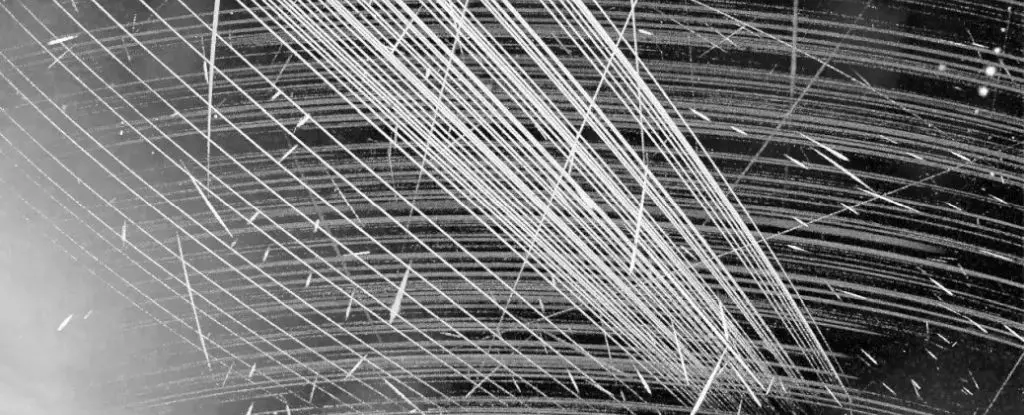In recent years, the night sky has transformed into a commercial havens of satellites. With companies like SpaceX, OneWeb, and Amazon launching thousands of satellites, the once pristine expanse is now cluttered with artificial bodies orbiting the Earth. While the intention behind these satellite swarms is often to improve global communication networks and internet accessibility, a less-discussed consequence has emerged: the increased radiation leaking into protected wavelength bands. The latest generation of Starlink satellites, particularly the v2mini series, has become a focal point of concern, as they emit radiation levels that are up to 32 times higher than their predecessors.
As the number of satellites continues to climb—currently standing at 6,398 for SpaceX alone—the implications for scientific exploration, particularly in radio astronomy, grow increasingly grave. The radiation leakage interferes with the very frequencies that astronomers require to study celestial phenomena. During earlier dialogues in 2023, SpaceX acknowledged the issue and promised solutions; however, the situation appears to deteriorate with each launching batch of satellites.
Astronomers are sounding the alarm, as research highlights that the electromagnetic signatures produced by the newer Starlink satellites are markedly brighter than any astrophysical sources detected by radio telescopes like the LOw Frequency ARray (LOFAR). This comparison is striking: the unintended emissions from the satellites are reported to be 10 million times more luminous than the feeblest astronomical signals we can observe. Such levels of brightness are akin to contrasting the faintest stars visible to the naked eye against the glaring light of a full Moon.
Essentially, the crux of the concern lies in the fact that these satellites are not just visible nuisances; their radiation is now intruding into radio frequency bands meant for scientific exploration. The 150.05 to 153 MHz range, essential for radio astronomy, is becoming increasingly compromised by the unregulated emissions from these satellite constellations. The implications of this reach far beyond mere visibility—essentially hindering humanity’s ability to study the universe.
The Challenge for Regulators
As more satellites enter low-Earth orbit, the outlook for radio astronomy becomes increasingly bleak. Alarmingly, current regulations regarding unintended electromagnetic radiation leakage from satellites are scant to non-existent. This lack of oversight has raised a unified voice among researchers, who emphasize the urgency of establishing regulatory frameworks to address these emissions. While one constellation may not seem inherently threatening in isolation, the cumulative impact of thousands of satellites could amplify the issue, leading to a future where critical observations are engulfed in artificially generated noise.
Calls for accountability have become more pronounced. Engineers and astronomers alike advocate for satellite companies—including the behemoths of the industry—to take meaningful steps towards minimizing their radiative footprint. Starlink, as a leader in this burgeoning market, is viewed as holding a vital position in setting industry standards; their actions could pave the way for sustainable practices in satellite deployment.
The Broader Implications for Technology and Society
The ramifications of compromised radio astronomy extend beyond the realm of research. The advancements in technology sparked by cosmic exploration have tangible benefits for life on Earth—developing innovations ranging from Wi-Fi and GPS to advancements in medical imaging. Should radio astronomy suffer irreparably from satellite interference, the entire fabric of technological progress could be at risk, potentially stifling breakthroughs that benefit society at large.
The concern is palpable among experts, who argue that proactive measures are needed to defend our collective ability to explore the cosmos. “Humanity is clearly approaching an inflection point regarding the preservation of our sky as a window for exploration,” asserts astronomer Cees Bassa. The scientific community is urging a concerted effort between regulators and industry stakeholders to establish a balanced framework that favors both technological advancement and the integrity of astronomical research.
In light of these pressing challenges, the dialogue surrounding satellite emissions has never been more critical. The scientific community is adamant about the need for government regulators to step in and enforce measures that ensure the preservation of radio astronomy. The hope is that satellite companies, particularly those leading in the deployment of extensive networks, will work collaboratively with researchers to identify the sources of unintended electromagnetic radiation and develop strategies for mitigating the fallout.
Without decisive action, we risk losing the ability to gaze into the cosmos and uncover the mysteries of our universe. As we navigate this uncharted territory, it is vital that we balance our technological aspirations with a commitment to protect and preserve the night sky—an invaluable resource for generations to come.

